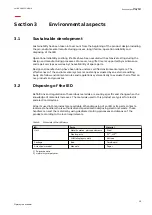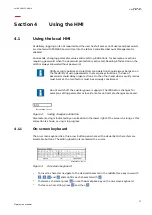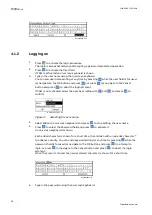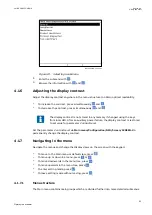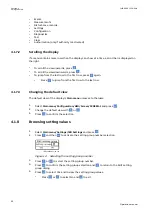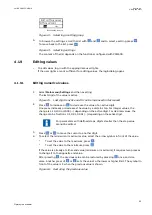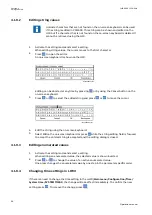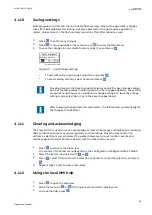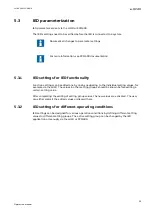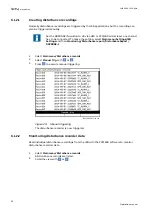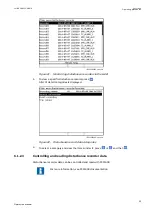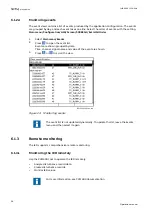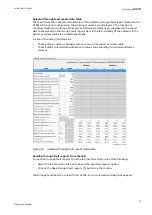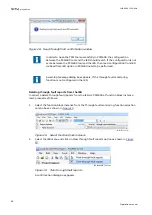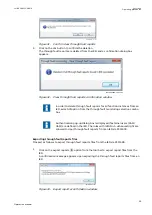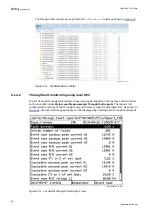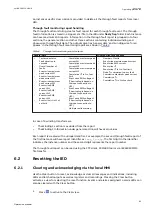
Section 5
IED operation
5.1
Normal operation
GUID-25794CEB-1F3A-452E-92B4-DDAD6F058CAF v6
In a normal IED use situation, the basic operation includes monitoring and checking
procedures.
•
Monitoring measured values
•
Checking object states
•
Checking function setting parameters
•
Checking events and alarms
All basic operations can be performed via the LHMI or with PCM600.
For more information, see PCM600 documentation.
5.2
Disturbance identification
GUID-A1EB4334-DAF0-439E-8EB4-8ED02C610DAA v8
Further actions to be taken to identify the disturbance:
•
Reading event history
•
Checking fault records
•
Analyzing disturbance recordings
Document the disturbance before clearing the information from the IED.
Only authorized and skilled personnel should analyze possible errors and decide
on further actions. Otherwise, stored disturbance data can be lost.
5.2.1
Disturbance recording triggering
GUID-5569488B-F930-4762-99CE-2863BEFB1947 v8
Disturbance recordings are normally triggered by IED applications when they detect fault
events. Disturbance recordings can also be triggered manually or periodically. The manual
trigger generates an instant disturbance report. Use this function to get a snapshot of the
monitored signals.
5.2.2
Disturbance record analysis
GUID-52E4493E-5F8F-44F8-94DE-23A2EBD36AC1 v5
The IED collects disturbance records of fault events which are set to trigger the disturbance
recorder. Disturbance data is collected and stored for later viewing and analysis. The
disturbance recorder data can be read and analyzed with PCM600.
1MRK 500 125-UEN A
Section 5
IED operation
27
Operation manual



